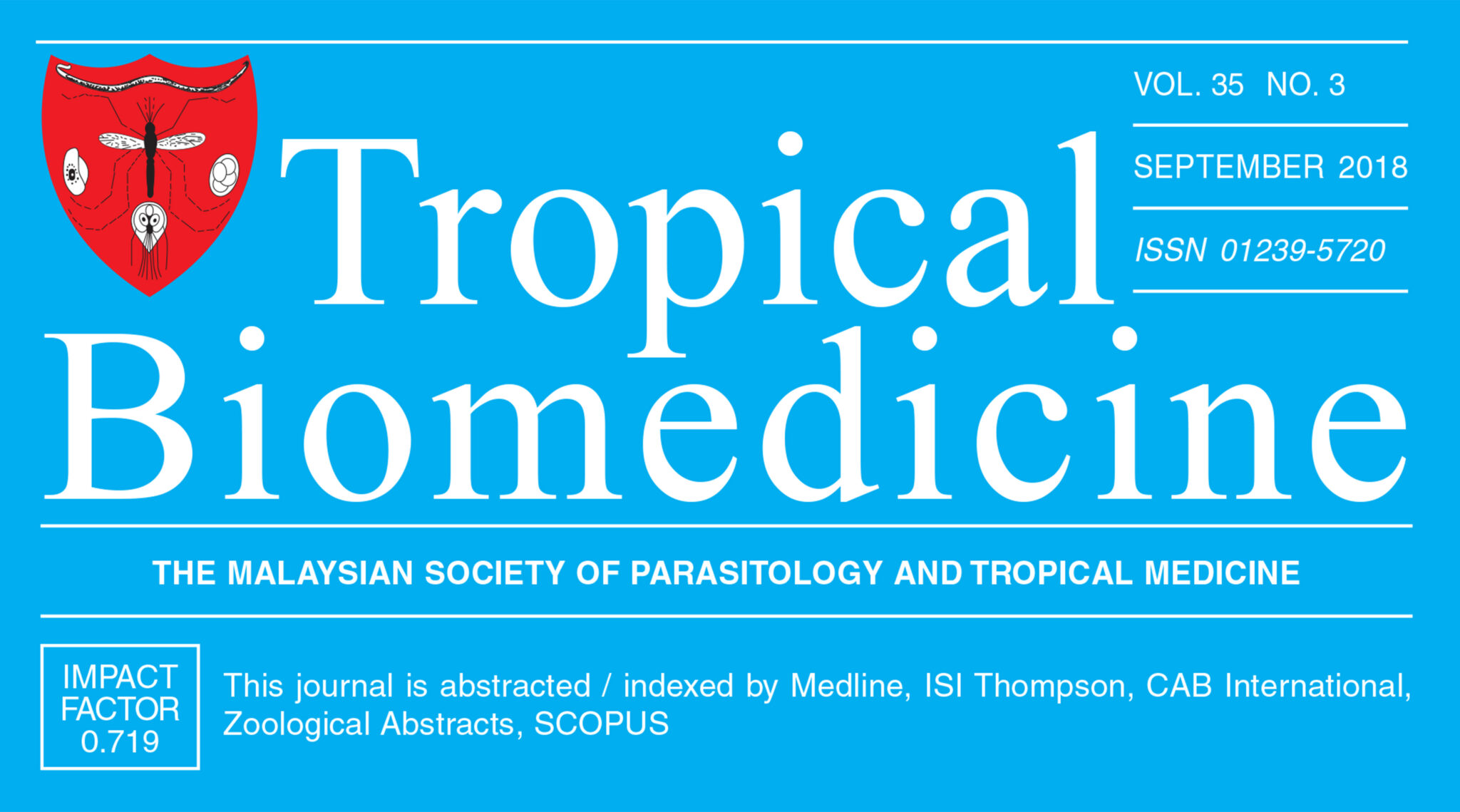
- Cover & Contents Page
- 593-603 : Molecular occurrence of canine babesiosis in rural dog population in Pakistan
- 604-609 : Group B streptococcus infection in a sudden unexpected death of infancy – the importance of microbiological investigation at post-mortem
- 610-618 : Larvicidal and adulticidal activities of castor oil against the dengue vector, Aedes aegypti
- 619-626 : Genotyping of Mycobacterium tuberculosis isolates from northwest Iran for determination on the mechanism of transmission
- 627-638 : Therapeutic use of Lucilia sericata maggot in controlling bacterial bio-burden in Rat wound model
- 639-652 : Aedes albopictus in urban and forested areas of Malaysia: A study of mitochondrial sequence variation using the CO1 marker
- 653-663 : Efficacies of five edible mushroom extracts as odor baits for resting boxes to attract mosquito vectors: A field study in Samut Songkhram Province, Thailand
- 664-668 : Seroprevalence of Toxoplasma gondii infection in sheep from northern China
- 669-677 : Genetic differentiation of Anisakis species (Nematoda: Anisakidae) in marine fish Priacanthus tayenus from Gulf of Thailand
- 678-683 : A preliminary study of platelet hyperactivity in the chronic indeterminate phase of Chagas’ disease
- 684-695 : Endoparasites and ectoparasites of rheas (Rhea americana) from South America
- 696-708 : Immune response in Blackbelly lambs to Haemonchus contortus and Trichostrongylus colubriformis mixed infection in a hot and humid climate
- 709-723 : The anti-malarial chloroquine modulated cytokine levels and increased animal survivability via Akt-mediated inhibition of GSK3β in Burkholderia pseudomallei-infected mice
- 724-735 : Prevalence of Cryptosporidium spp. in farmed animals from steppe and high plateau regions in Algeria
- 736-743 : Epidemiological investigation and risk factors of Peste des petitis ruminants (PPR) in yaks (Bos runniens) and cattle in five regions of China
- 744-754 : Prevalence and risk factors for colonization of Campylobacter spp. in household dogs in Metro Manila, Philippines
- 755-768 : Influence of citronella and chlorpyrifos on Chrysomya megacephala (Fabricius) and Chrysomya rufifacies (Macquart) (Diptera: Calliphoridae) infesting rabbit carcasses
- 769-774 : HIV-2 Infection in Malaysia: Current situation and the use of in-house real-time reverse transcription PCR for HIV-2
- 775 -780 : Evaluation of Conventional PCR for Detection of Toxigenic Corynebacterium diphtheriae Strains in Malaysia
- 781-795 : Clinical enzymes as possible immunological biomarkers in the diagnosis of malaria, human African and American trypanosomiasis
- 796-803 : Genetic characterization of Sarcoptes scabiei var. hominis from scabies patients in Pakistan
- 804-814 : New records of five species of black flies (Diptera: Simuliidae) from Myanmar, with descriptions of the male and pupa of Simulium chanyae
- 815-825 : Antifungal and antibiofilm activity of Persian shallot (Allium stipitatum Regel.) against clinically significant Candida spp.
- 826-838 : Single and co-breeding of different mosquito species in fogging-free and dengue risk areas in West Malaysia
- 839-848 : MMP-2 gene expression at mRNA level in HBV and HCV infected patients
- Page i : Editorial board and Council members
